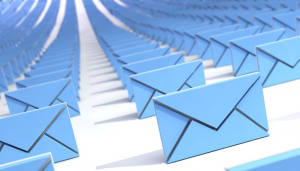Over the past decade, faster computers, super-powered phones, and widespread access to high speed internet have made omnichannel access possible in a way that we’ve never seen before in human history. But despite all of the hype we give to emerging mobile and social channels, the humble email is still one of the most effective and reliable channels for marketers to speak with their customers. Here are a few reasons why.
Maximize The Potential of Your Mailing List
Thanks to ad-blocking software, today’s customers might not actually see any ads at all before streaming videos, on social media sites, or just while browsing the Internet. It’s a problem that we marketers struggle with daily throughout the industry.
Right off the bat, email has an advantage over web ads because of it’s still a channel that’s – for the most part – impervious to ad blocking software. Promotions, messages and the like will appear for your customers if they’ve added their info to your mailing list, so make adding to it a priority.
Email also boasts an incredibly high ROI, considering how few resources it takes to deliver. Other channels such as advertising through social media have their own advantages such as virality and views, but when it comes down to it, email has been proven time and time again to drive actual action and sales.
1) Email is your passport to the rest of the Internet.
Email supplanted direct mail by being faster, cheaper to produce, and more accessible on the go. So by that logic, you would think that texts, tweets, Snapchats and Facebook messages should replace email – but it simply hasn’t happened.
The thing about email is that it’s an indispensible “passport” to the Internet. Customers need an email address to pay for things, subscribe to services, and sign up for websites – social media sites still require one, and so do their apps.
Proof that there’s something here? Google recently announced their new Customer Match service, which allows companies to track and understand their customers’ needs through their Gmail and YouTube activity. This in turn will give advertisers the ability to more consistently retarget their buyers and provide more relevant content.
2) Email is about getting information.
Email metrics are more sophisticated than ever, meaning that in addition to being a cost-effective way to market new services and products to your customers, your emails can be a source of valuable information about your brand, market, and channels.
Using an email tracker can give you a huge amount of actionable data. You can learn when customers are more receptive to emails, what kind of marketing they respond to, and which channels (PC, laptop, mobile? Other?) they’re most likely to use to access and interact with your brand.
3) Email is the bridge between channels.
Old-school digital marketers cut their teeth on email by using it as a means of direct advertising.
In the Omnichannel Era, however, it’s equally as important for email to be used to continue the conversation that customers have with your brand on other channels, such as through your app, ecommerce website, or storefront.
For example: if a customer begins a transaction on your eCommerce website but later abandons their cart to run errands, sending them a triggered email could be just the push necessary to finish the sale.
Though the field of digital marketing is more sophisticated than it was ten years ago, the humble email is still a legitimate, high-ROI tool for advertisers looking to connect and interact with their customers. Make no mistake: though new technologies will change the face of branding: traits like creativity, ingenuity, and adaptability that define great marketers will never go out of style.
This article originally appeared on Business2Community.

